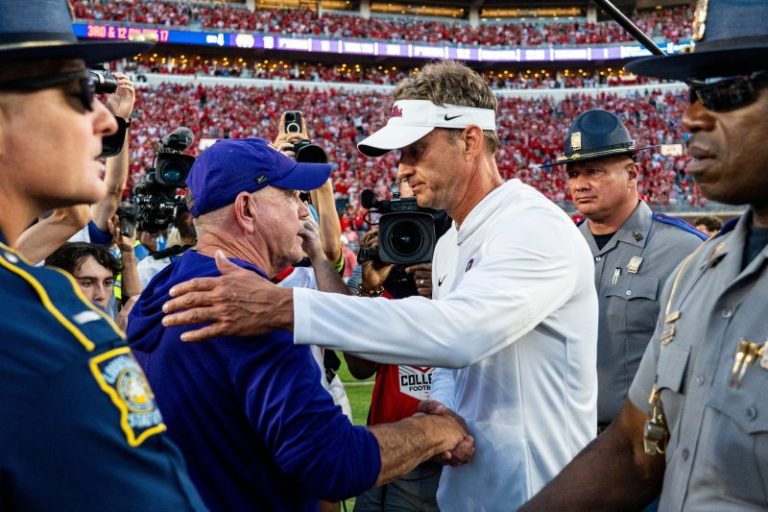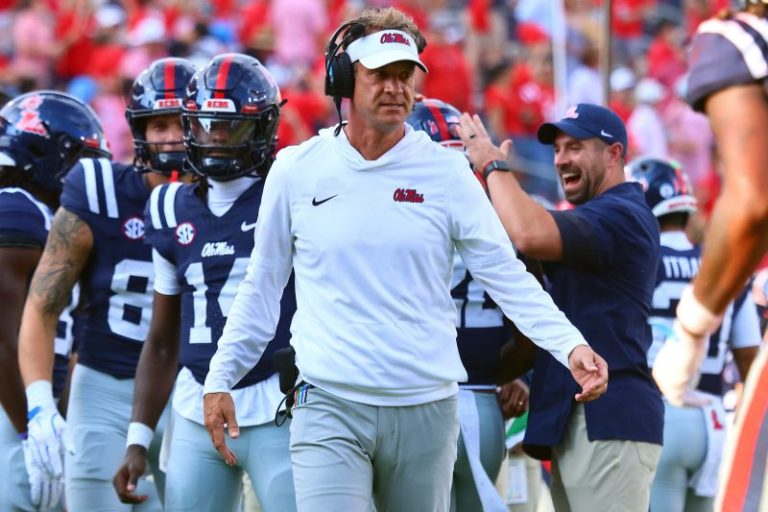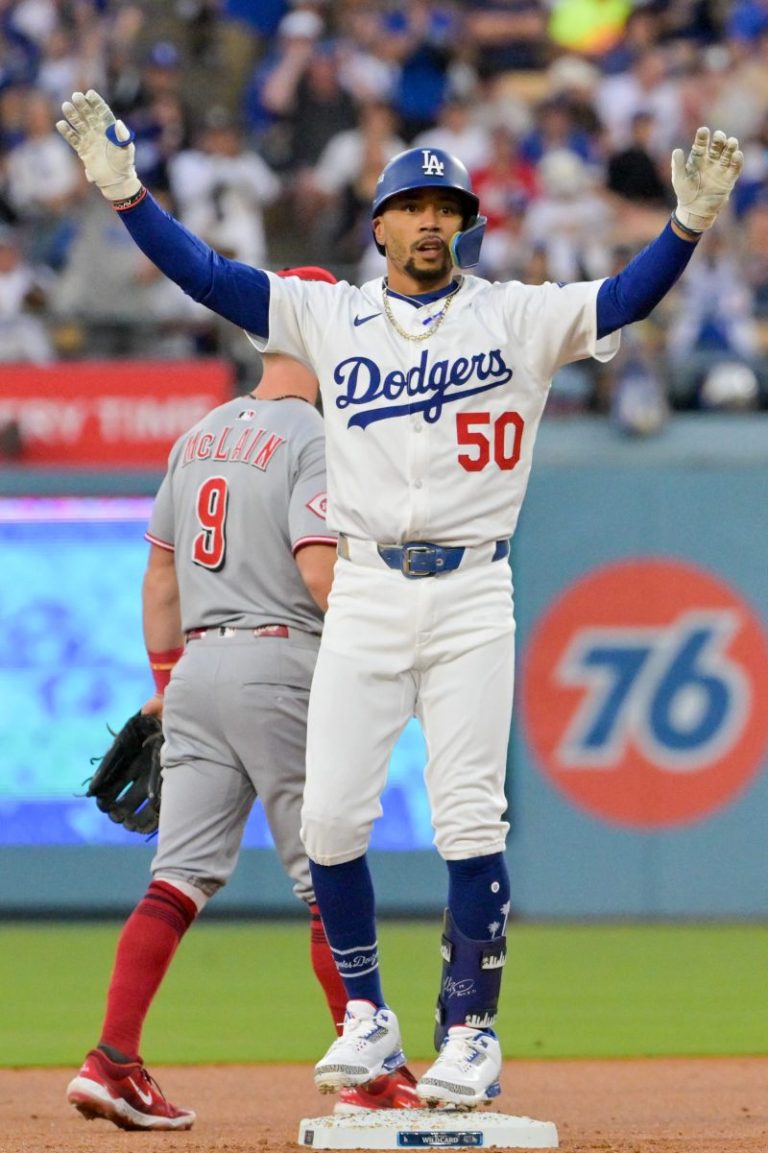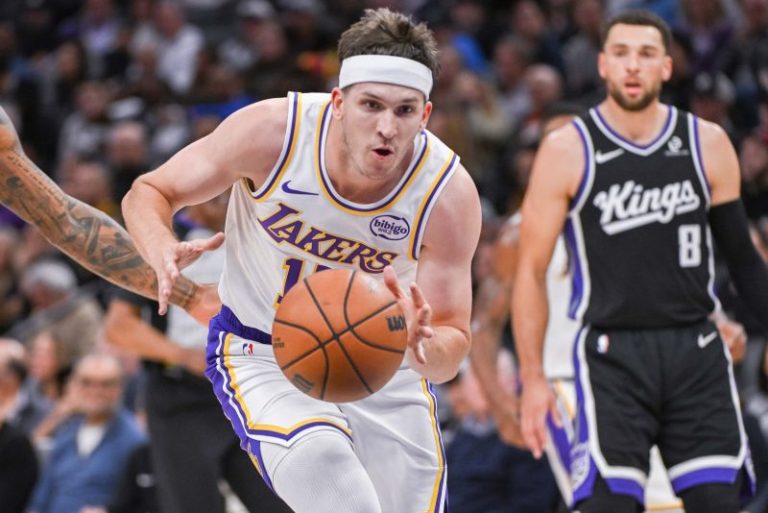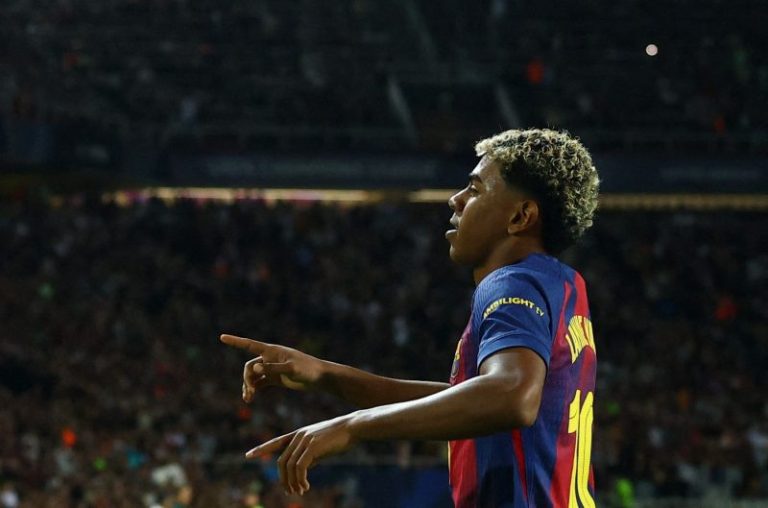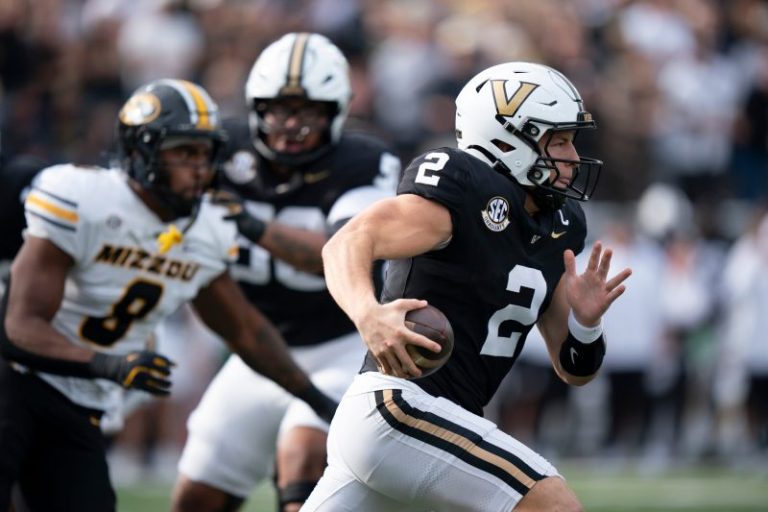- Mookie Betts is chasing his fourth World Series title, third with the Los Angeles Dodgers.
- Since a February 2020 trade from the Red Sox, the Dodgers have been to the World Series three times since acquiring Mookie Betts.
- After switching to shortshop for the 2025 season, Mookie Betts’ defensive prowess has made him a Gold Glove finalist.
LOS ANGELES — He is Michael Jordan in spikes.
He is Tiger Woods with a glove.
He’s Tom Brady with bat.
He is Los Angeles Dodgers shortstop Mookie Betts.
Oh sure, he’s not an international sensation who can’t walk along the streets of Los Angeles, let alone Tokyo, without an army of photographers and reporters running after him like Shohei Ohtani.
He’s not a folk hero as the son of a Hall of Famer and beloved by everyone in his own country like Toronto Blue Jays first baseman Vladimir Guerrero Jr.
He doesn’t throw resurrect memories of Bob Gibson throwing complete games in the postseason like Yoshinobu Yamamoto.
No, all Betts does is win.
And win.
And win.
He’s obsessed with it.
Forget the glossy statistics, don’t pay attention to the numbers on the back of his bubblegum card, and don’t bother comparing him to any of the legends who have played this game.
You want to define Mookie Betts.
Just look at the rings on his finger.
Betts already has won a World Series championship in Boston. He won two more in Los Angeles. And he is three victories away from having a ring for every finger on his left hand but his thumb.
“That’s all that matters to me,’’ Betts quietly says before the Dodgers host the Toronto Blue Jays in Game 3 on Monday (8 p.m. ET on FOX). “I want to win. That’s all I think about, winning.’’
Betts, 31, in the fifth year of a 12-year, $365 million contract, wants his final baseball resting place to be in Cooperstown, N.Y., home of the Baseball Hall of Fame.
He’s not worried about his legacy, or his individual statistics, but making sure all of the victories, postseason appearances and World Series championships get him over the threshold.
“Being in the Hall of Fame is kind of a driver of mine,’’ Betts says. “The legacy comes with the winning. I just know that if I can do my end goal, which is to be in the Hall of Fame, what comes with it comes with it.
“You can’t argue with winning. You can argue with stats on the back of the baseball cards. There’s a lot of people that do that. But not a lot of people can say they won four or five rings, you know. That’s what I’m trying to say.
“And then there’s no arguments.’’
He looks at Buster Posey, who had only 1,500 hits as a catcher, but won three World Series championships with the San Francisco Giants and should be inducted in the 2027 Hall of Fame class.
He’s in awe of the late Yogi Berra, who won 10 World Series championships with the New York Yankees.
He admires Derek Jeter, the Yankees shortstop great who won five World Series titles.
Betts wants to be that guy, too, the ultimate winner who will do anything and everything possible to make his team a champion.
You want him to play right field? Ok, he won six Gold Gloves, a batting title and an MVP award as a right fielder.
You want to move him to second base? No problem, he’ll win a Silver Slugger award and make the All-Star team there, too.
And this year, you want to see if he can play shortstop? Well, he’s a Gold Glove finalist and Betts has the Dodgers back in the World Series with his brilliant defense while hitting 20 homers, scoring 95 runs and driving in 82.
“Shohei Ohtani might be the best baseball player on earth right now,’’ Milwaukee Brewers manager Pat Murphy says. “Freddie Freeman has touched our hearts many times in the wrong way. But Mookie Betts, what he’s doing in the game of baseball, is incredible, to move from outfield to playing shortstop on the Los Angeles Dodgers, a team that’s stacked with everything you can be stacked with.
“For him to do that, and do it well, is incredible. Imagine Steph Curry just saying, “Ok, he’s going to go play power forward and guard the other team’s best player.’ That’s what it’s like. So he’s going to guard the other team’s best player, who’s bigger, whatever. Never done it and he does it and they win still. And he puts up his 30-plus a game. …
‘I’m just telling you, man, if you’re talking about most valuable player [award], you’re going to go through the stats and all that kind of stuff. But if you’re talking about a player that really was valuable to this team this year, I’m saying Mookie Betts is number one.’’
Betts, who has seven top-10 MVP finishes, won’t finish in the top 10 this season with his slow starts, but he’s undeniably the finest athlete in the game.
“Makes playing shortstop look easy for a guy that’s a Gold Glover in right field,’’ Blue Jays manager John Schneider says. “He’s just consistent. I think he understands the speed of the game, understands big stages of the game. … A couple plays that he’s made, man, just going to his right against us in the first couple games, pretty impressive what he does.
“And the fact that he’s hitting at the top of the order, I think Mookie’s a hell of a player.’
Really, there’s absolutely nothing Betts can’t do.
Go ahead, name a sport, and he’ll beat you.
Grab your golf clubs, and he’ll beat you in every round.
You want to hit the nearby bowling alley? Go ahead and challenge the guy who has bowled multiple perfect games in competition, and might bowl professionally when he’s done with baseball.
Yamamoto has thrown back-to-back complete games this postseason, but when he comes to Betts’ house to bowl, uh, it doesn’t work out too well.
“He actually comes over pretty often,’’ Betts said, last bowling against him before their flight to Toronto. “He knows how to keep it on the lane. He tries to curve it a little bit. He’s learning.’’
You want to pick up a ping-pong paddle? Feel free to go ahead and embarrass yourself.
Pickleball? Good luck trying to beat him after he picked up the sport a couple of years ago.
“It’s absolutely insane what he does,’’ Dodgers third baseman Max Muncy says. “But I feel like the only person that I can think of that could do something like that is Mookie. I’m sure he could pitch. He can do everything else, why not?’’
Has there ever been a sport Betts hasn’t conquered, we ask?
“Uh, not really,’’ he says. “It’s because I try and play the stuff that I’m good at. If I’m not good at it, I’ll figure it out, learn, and at least to be serviceable in it. I think my brain just kind of works that way when it comes to sports.
“I can’t really explain it, it just does.’’
Ok, have you ever tried a sport in which you didn’t dominate?
“Honestly, I don’t even remember,’’ he says.
Well, considering he has excelled at every position he’s played on a baseball field, every outfield position, second base and shortstop, why not try the hot corner at third? How about first base? For giggles, why not put on the shin guards and catch? He pitched in high school, why not now?
“I don’t think there’s anything that his competitive drive wouldn’t allow him to do,’’ Dodgers reliever Blake Treinen says. “Could he pitch and get a few big outs? You know he could. He’d probably be a great reliever, and then win a Gold Glove doing it.’’
Sorry, Betts says, but he’s good sticking at shortstop for now.
“I don’t want to do anything else,’’ Betts said. “I just want to win, that’s it, whatever it takes.’’
Besides, Betts cares too much about winning than to turn his versatility into a sideshow. He’s too busy making sure the Dodgers don’t become vulnerable at a time when the rest of the baseball world is trying to gun them down.
“Nothing’s easy,’’ Betts says. “Winning the World Series is hard in itself, but then coming back is another animal because the target’s always on your back.
“But it’s also fun to play like that. There’s an art to it. There’s a mindset to it. It’s something that a lot of us Dodgers have learned to embrace. Not everyone can say that they got to play on a team that was expected to win, loving those expectations, and embracing those expectations.’’
Betts also is Exhibit 1-A to the argument that the Dodgers aren’t bad for baseball with their massive payroll, but actually are just smarter than most teams.
The Boston Red Sox shopped Betts a year before he was eligible for free agency in February 2020. Any team in baseball could have had him. His contract didn’t include a no-trade clause. The Red Sox were just looking for prospects in return.
The Dodgers sent the Red Sox outfielder Alex Verdugo, young shortstop Jeter Downs, catcher Connor Wong and agreed to take on starter David Price’s contract. Well, Verdugo has turned into nothing more than a journeyman. Downs is playing for the Fukuoka SoftBank Hawks in Japan. Wong hit .190 in a backup role with the Red Sox. And Price retired three years ago.
The Red Sox haven’t been back to the World Series since the trade.
The Dodgers have been to the World Series three times in six years.
“So, anybody could have made that trade,’’ Betts said. “Everybody’s capable of doing the same thing. Everybody can spend money if they want to, and our guys want to.
“I’m sure there’s a whole money component to it, which I’m not here to debate all that. I just know that everybody has the ability to do this, and we chose to do it. We enjoy winning from the top to the bottom.’’
And, oh, have they won.
They’ve been to the postseason 13 consecutive times, won 12 NL West titles, five pennants and are trying for a third championship in that timeframe.
Hello dynasty, it’s Mookie.
“I don’t even know what a dynasty really is,’’ Betts says. “I just know we’ve been good. [Team president] Andrew [Friedman] and those guys keep putting a good product out there. There’s no secret. There’s no magic formula. We just want to win, and purely your will to win.
“You look in here, and everybody is driven to win. You want to be with good guys. You want to come to a clubhouse where nobody gets in trouble. Nobody’s idling. Nobody argues. Nobody fights. You kind of come in and take care of your business. We hold each other accountable, which I think is huge.
“We just want to be the smartest players, the best players, the most talented players, and yeah, the nicest as well.’’
It’s all that Mookie wants, and well, a few more of those championship rings for his other hand, as well.
Follow Bob Nightengale on X @Bnightengale.
This post appeared first on USA TODAY

